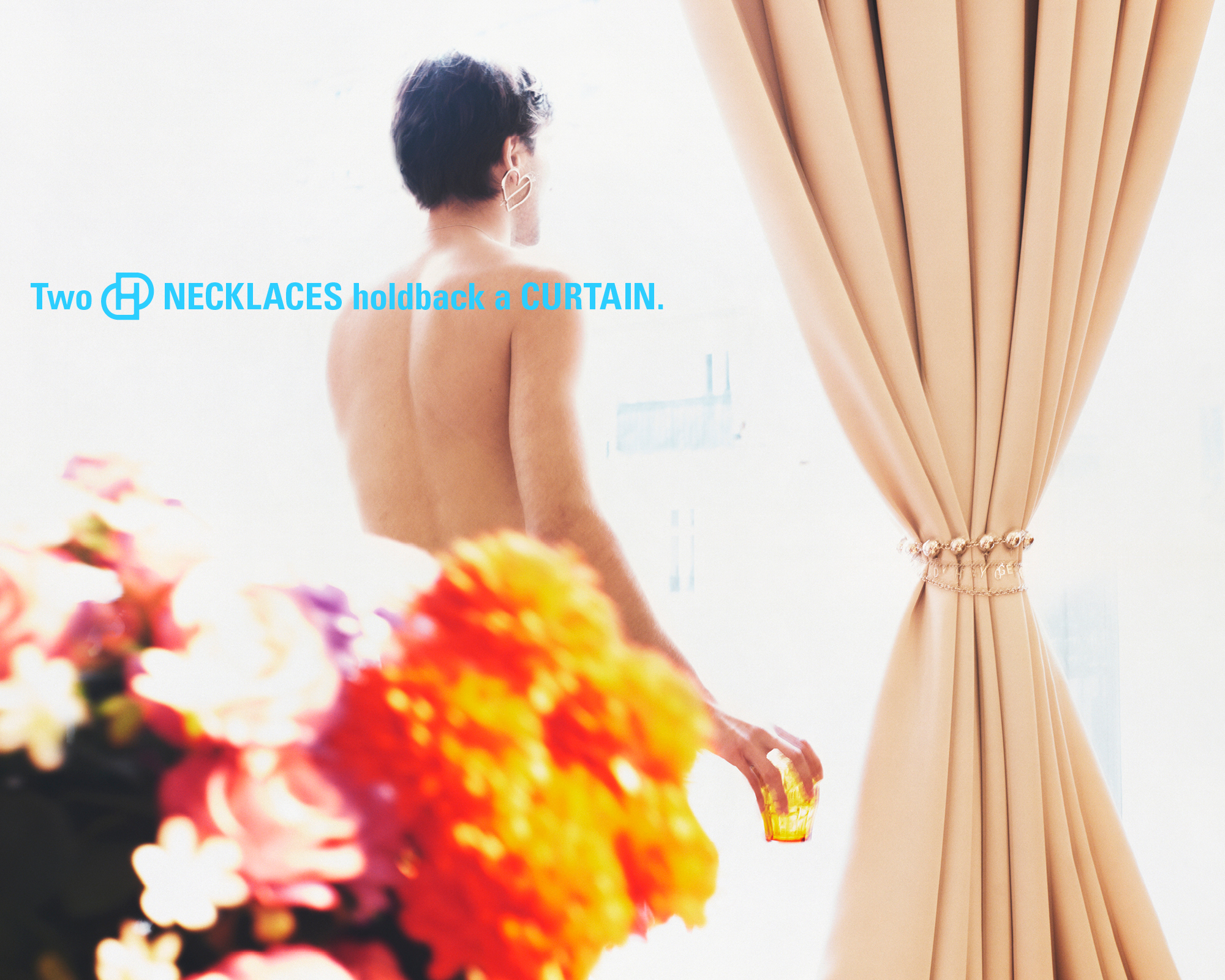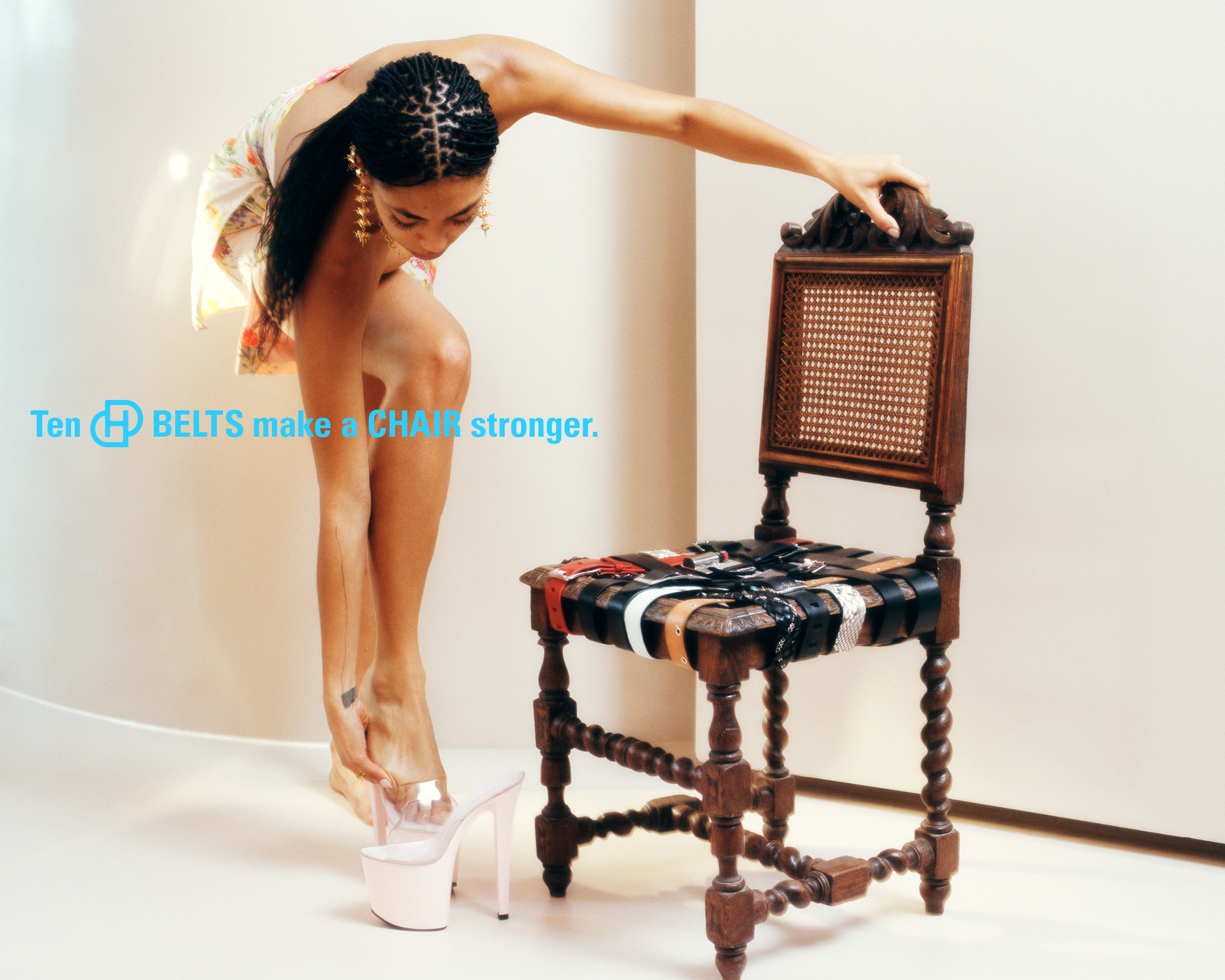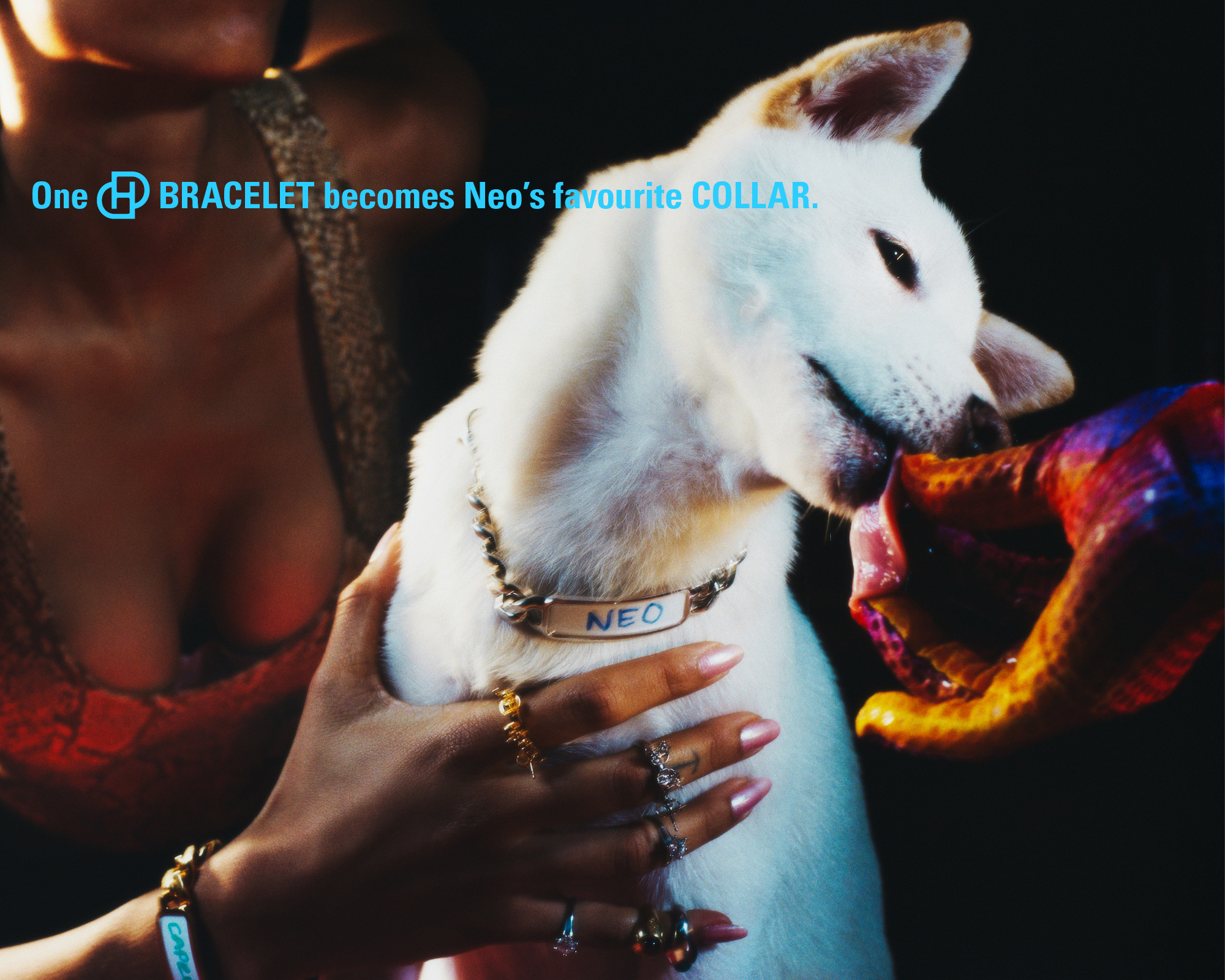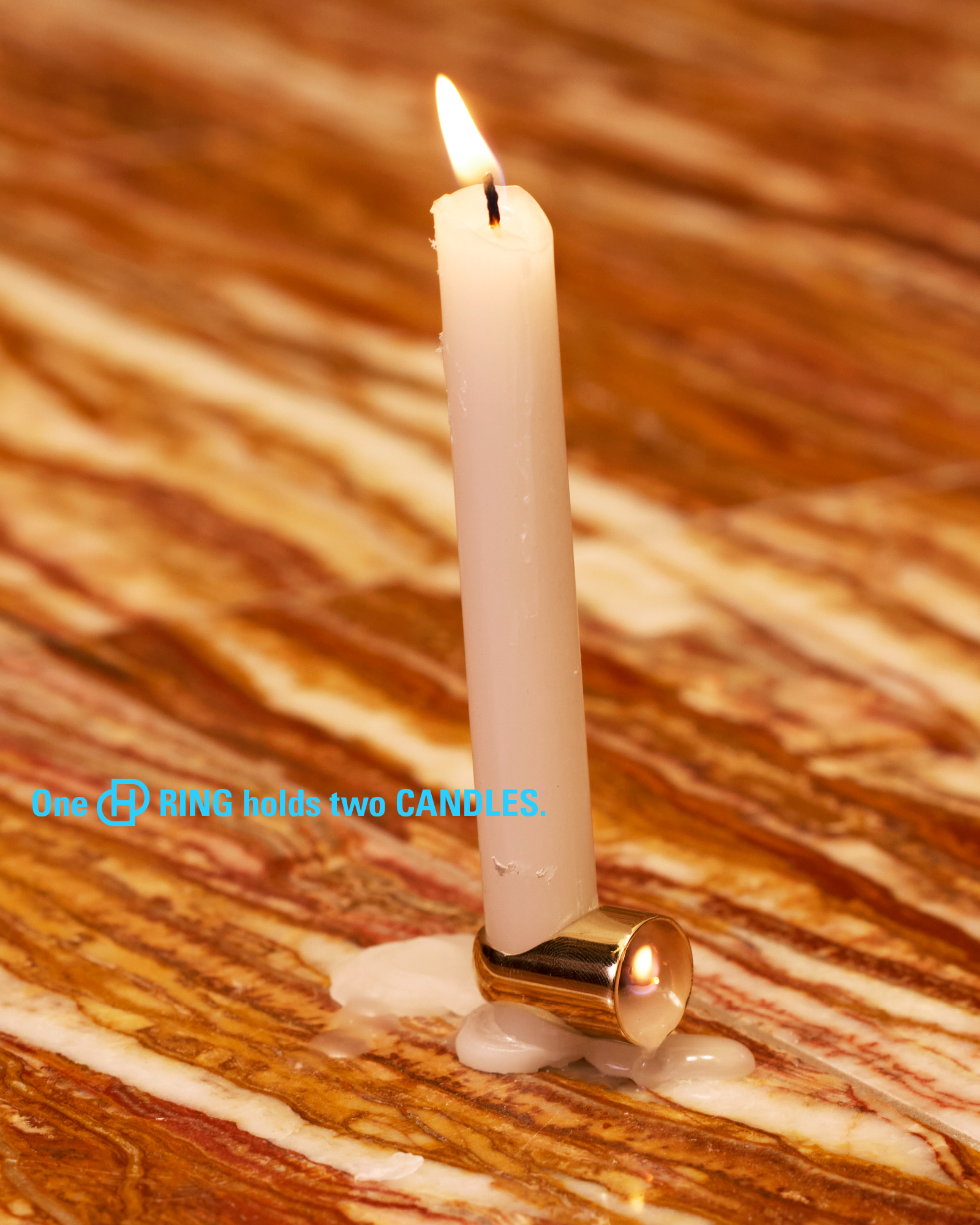Can a donut be a ring? What about an old CD-ROM? An iPhone charger makes for a charming necklace, or even a bracelet, no? And could your motorcycle helmet, when held by its chin strap, also serve as a bucket bag? According to Stéphanie D’heygere and her legion of Instagram followers, the answer to all of these questions — and more — is a resounding, emphatic “yes!” For the Belgian designer, anything can become an accessory. All it takes is a little imagination, some ingenuity and a lot of play.
Before launching her namesake accessories label, D’heygere, three years ago, Stéphanie studied fashion design at the Royal Academy of Fine Arts in Antwerp. Ironically, it was by studying garments that she discovered her penchant for accessories. During her studies, Stéphanie interned at Maison Martin Margiela, where she found herself working in the fashion house’s accessories department. “I always call it some kind of ‘eureka’ moment,” she says. “At school I hated designing patterns, but with accessories, everything fit together. What I really like about accessories, and what was the problem with garments, is you’re limited to work around the body. And there are so many different body shapes. With accessories, it’s much more straight-to-the-point.” After her internship, Stéphanie was brought on at Margiela, where she served as accessories designer for four years. “It really shaped me,” she adds. “It was the best experience I could have dreamed of.”

Like Margiela, Stéphanie designs through concepts. Her accessories come together through associations, mental transformations, hypothetical questions. And like artist Marcel Duchamp — one of the designer’s main inspirations — her designs both celebrate and question the conventions of the everyday. “I write things down all the time and I always have this little notebook with me,” she says. “Some ideas just stick. Maybe I saw something the wrong way, what my eyes saw wasn’t the reality and that gives me an idea. Or I see an object and I ask myself, ‘How can I make this different?’” For D’heygere’s second collection, Stéphanie created a hoop earring painted to look like the arm of a pair of glasses. “It’s funny because you also wear glasses on your ears, but now it’s an earring, a piece of jewellery,” she explains. Sometimes Stéphanie even folds the concept back on itself. The label’s most recent collection features a pair of earrings made from a cluster of pins and backings. “It’s a messy punk vibe earring, but when you look at it, it’s just using the codes of classic jewellery making.”
It’s a cerebral approach to a category that is, traditionally, considered decorative, perhaps the opposite of ‘cerebral.’ “The main function of an accessory is to accessorize your garments, to decorate your look. I wanted to go a little bit further with that: that you can actually accessorize your accessory. That was the starting point of the brand,” she explains. Stéphanie’s first D’heygere accessory was the label’s signature Canister Hoops: a pair of oversized hoop earrings fitted with a metal cylinder, the perfect size to hold a single cigarette. Or a rolled bank note. Or, even, as the label’s first campaign suggested, a freshly cut flower.

Accessories — especially jewellery — are inherently personal: signifiers of individual flair (a brooch), carriers of sentiment (a locket), tiny bits of storytelling (a signet ring). D’heygere’s Canister Hoops, like many of the label’s accessories, explode this concept wide open, letting the wearer write and rewrite their personal stories with each wear. Sometimes, quite literally. The label’s autumn/winter 20 collection features a number of ID-style bracelets and necklaces, each fitted with a mini whiteboard (and accompanied with dry-erase markers). “You can personalize these pieces and then wipe it off so easily, depending on your mood or where you’re going,” says Stéphanie, before jumping to a real-life example. “When I went to my friend’s birthday party, I wore the bracelet and wrote a birthday message on it.” To D’heygere, these multi-wear pieces also lend themselves to a specific kind of sustainability: “I like to give a little bit of freedom to the client so they have options of how to wear something. I think that’s also some kind of sustainability: that you don’t have to buy new things all the time, that with one thing you can have different effects.”
But D’heygere’s accessories aren’t just highly personal, they’re also highly functional. Let’s not forget that the Canister earrings are made to hold cigarettes and dollar bills, making them handy to wear to bar crawls and bodega runs, alike. “I think 90% of the pieces have a double function,” Stéphanie says. Attach a pin and backing to a shoe horn and it becomes a charming earring; same goes for a bottle opener. A ring doubles as an ashtray. In a collaboration with Bic, a pen becomes a keychain. Or is it the other way around?

In lockdown, Stéphanie doubled down on this play, launching the label’s “Manifesto” project, which she calls “a new chapter for the brand.” At the beginning of the pandemic, via Instagram story, Stéphanie implored her label’s followers to create and document their own D’heygere-esque accessories: “Dear followers,” she wrote. “Let’s get creative. ‘EVERYTHING CAN BECOME AN ACCESSORY.’ PM your creations.’” The designer received hundreds of submissions, some absolutely absurd (a prawn ring, a tissue box shoe), some poetic (a portrait frame necklace) and some somewhat handy (an eyelash curler earring, to make-up on-the-go). In addition to posting some of her favourite submissions on Instagram, she’s compiled each and every one of them into a database on the label’s official website. “I have to say, it’s something I love working on. What we tried to create was this crazy data bank where you get a bit lost.” More than that, it’s an ever-evolving manifesto that serves to visually outline the D’heygere ethos. Stéphanie’s favourite submission? A raw onion ring worn as a ring. “I like this funny, poetic side of it. It’s an onion ring but it’s also a ring as an accessory. And then the caption was, ‘A ring so beautiful, it will make you cry.’,” she adds with a laugh.
Like the onion ring, some of D’heygere’s best accessories also hold these seemingly endless layers of meaning. It’s fascinating to listen to the story behind each piece, following Stéphanie’s mind’s journey as it draws associations between history, habits and anecdotes. In addition to referencing the practical use of original ID bracelets and the storytelling capabilities of jewellery, D’heygere’s whiteboard bracelet is also “a wink to when you write something on your hand because you don’t want to forget it.” This season’s seemingly absurdist candle signet ring is fully functional (“you can really use the candle until it’s gone”). But, as Stéphanie notes, there’s always a conceptual twist: “Signet rings were originally used to seal letters with wax. It’s a play on that.”



Credits
Photographer Arnaud Lajeunie.
Styling Ursina Gysi.
Set design Rémy Briere
Art direction Antoine Roux
Nails Théana Giraudet
Special thanks to César, Glenn, Annabel, Beaudine, Laetitia, Toni, Valentine, Thomas, Grégoire, Geneviève, André, Neo and Simon.


